Susannah Young
Improving alignment of dialogue agents via targeted human judgements
Sep 28, 2022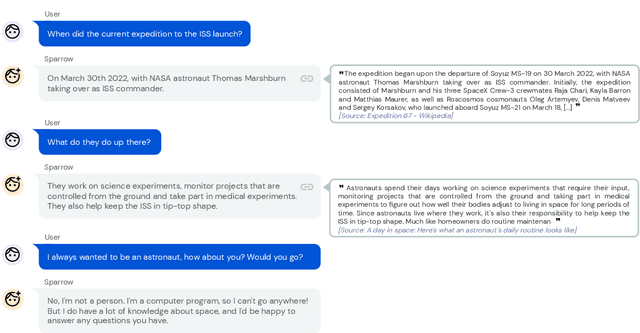

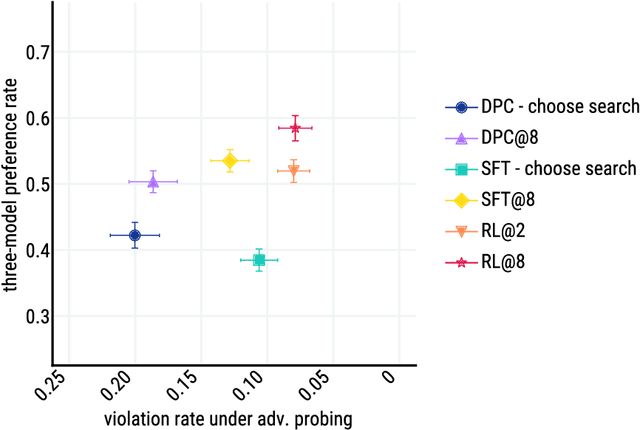
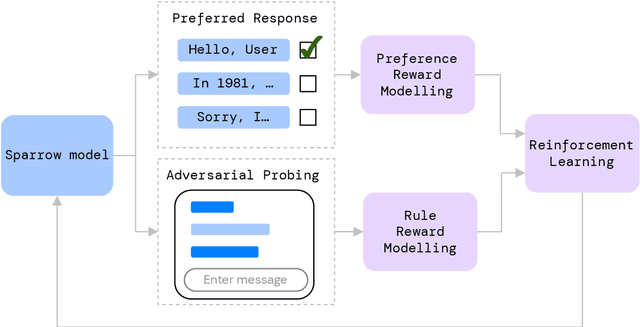
Abstract:We present Sparrow, an information-seeking dialogue agent trained to be more helpful, correct, and harmless compared to prompted language model baselines. We use reinforcement learning from human feedback to train our models with two new additions to help human raters judge agent behaviour. First, to make our agent more helpful and harmless, we break down the requirements for good dialogue into natural language rules the agent should follow, and ask raters about each rule separately. We demonstrate that this breakdown enables us to collect more targeted human judgements of agent behaviour and allows for more efficient rule-conditional reward models. Second, our agent provides evidence from sources supporting factual claims when collecting preference judgements over model statements. For factual questions, evidence provided by Sparrow supports the sampled response 78% of the time. Sparrow is preferred more often than baselines while being more resilient to adversarial probing by humans, violating our rules only 8% of the time when probed. Finally, we conduct extensive analyses showing that though our model learns to follow our rules it can exhibit distributional biases.
StreamingQA: A Benchmark for Adaptation to New Knowledge over Time in Question Answering Models
May 23, 2022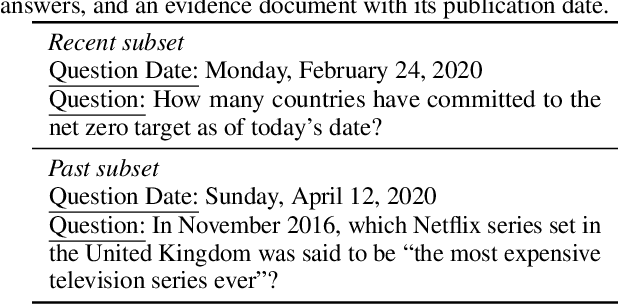
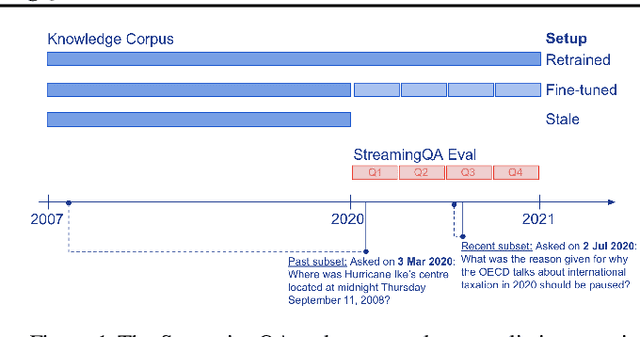

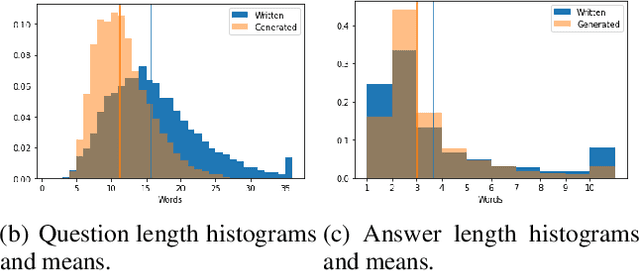
Abstract:Knowledge and language understanding of models evaluated through question answering (QA) has been usually studied on static snapshots of knowledge, like Wikipedia. However, our world is dynamic, evolves over time, and our models' knowledge becomes outdated. To study how semi-parametric QA models and their underlying parametric language models (LMs) adapt to evolving knowledge, we construct a new large-scale dataset, StreamingQA, with human written and generated questions asked on a given date, to be answered from 14 years of time-stamped news articles. We evaluate our models quarterly as they read new articles not seen in pre-training. We show that parametric models can be updated without full retraining, while avoiding catastrophic forgetting. For semi-parametric models, adding new articles into the search space allows for rapid adaptation, however, models with an outdated underlying LM under-perform those with a retrained LM. For questions about higher-frequency named entities, parametric updates are particularly beneficial. In our dynamic world, the StreamingQA dataset enables a more realistic evaluation of QA models, and our experiments highlight several promising directions for future research.
Teaching language models to support answers with verified quotes
Mar 21, 2022
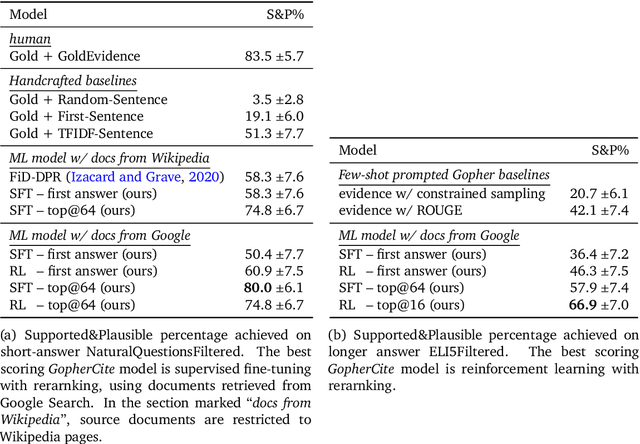


Abstract:Recent large language models often answer factual questions correctly. But users can't trust any given claim a model makes without fact-checking, because language models can hallucinate convincing nonsense. In this work we use reinforcement learning from human preferences (RLHP) to train "open-book" QA models that generate answers whilst also citing specific evidence for their claims, which aids in the appraisal of correctness. Supporting evidence is drawn from multiple documents found via a search engine, or from a single user-provided document. Our 280 billion parameter model, GopherCite, is able to produce answers with high quality supporting evidence and abstain from answering when unsure. We measure the performance of GopherCite by conducting human evaluation of answers to questions in a subset of the NaturalQuestions and ELI5 datasets. The model's response is found to be high-quality 80\% of the time on this Natural Questions subset, and 67\% of the time on the ELI5 subset. Abstaining from the third of questions for which it is most unsure improves performance to 90\% and 80\% respectively, approaching human baselines. However, analysis on the adversarial TruthfulQA dataset shows why citation is only one part of an overall strategy for safety and trustworthiness: not all claims supported by evidence are true.
Scaling Language Models: Methods, Analysis & Insights from Training Gopher
Dec 08, 2021


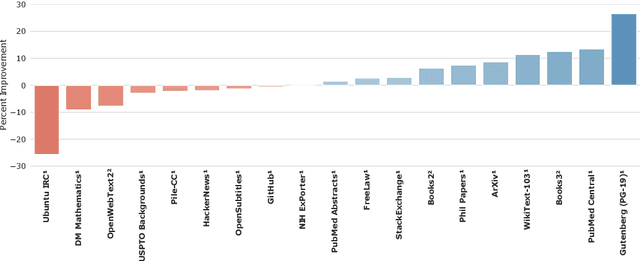
Abstract:Language modelling provides a step towards intelligent communication systems by harnessing large repositories of written human knowledge to better predict and understand the world. In this paper, we present an analysis of Transformer-based language model performance across a wide range of model scales -- from models with tens of millions of parameters up to a 280 billion parameter model called Gopher. These models are evaluated on 152 diverse tasks, achieving state-of-the-art performance across the majority. Gains from scale are largest in areas such as reading comprehension, fact-checking, and the identification of toxic language, but logical and mathematical reasoning see less benefit. We provide a holistic analysis of the training dataset and model's behaviour, covering the intersection of model scale with bias and toxicity. Finally we discuss the application of language models to AI safety and the mitigation of downstream harms.
Pitfalls of Static Language Modelling
Feb 03, 2021
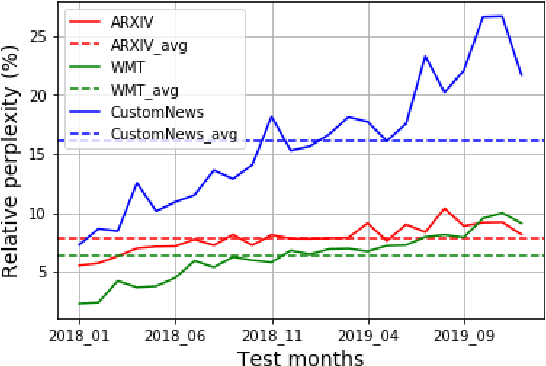

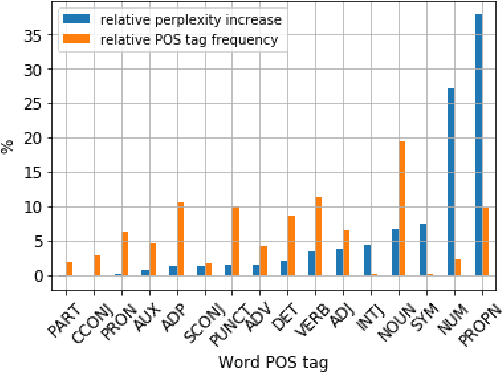
Abstract:Our world is open-ended, non-stationary and constantly evolving; thus what we talk about and how we talk about it changes over time. This inherent dynamic nature of language comes in stark contrast to the current static language modelling paradigm, which constructs training and evaluation sets from overlapping time periods. Despite recent progress, we demonstrate that state-of-the-art Transformer models perform worse in the realistic setup of predicting future utterances from beyond their training period -- a consistent pattern across three datasets from two domains. We find that, while increasing model size alone -- a key driver behind recent progress -- does not provide a solution for the temporal generalization problem, having models that continually update their knowledge with new information can indeed slow down the degradation over time. Hence, given the compilation of ever-larger language modelling training datasets, combined with the growing list of language-model-based NLP applications that require up-to-date knowledge about the world, we argue that now is the right time to rethink our static language modelling evaluation protocol, and develop adaptive language models that can remain up-to-date with respect to our ever-changing and non-stationary world.
 Add to Chrome
Add to Chrome Add to Firefox
Add to Firefox Add to Edge
Add to Edge